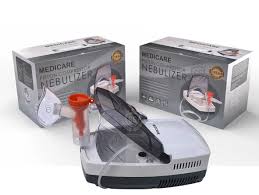If you’ve ever spent a cold winter evening in Louisville curled up by the fire, you already know how comforting a fireplace can be. But behind the scenes of those cozy flames is a key piece of your chimney that most homeowners overlook—the chimney liner.
It’s easy to think, “Out of sight, out of mind,” but the chimney liner does a lot more than you might realize. So, let’s break it down: Do you really need a chimney liner, or is it just one of those “nice-to-have” extras? Let’s find out what it does, when you need one, and how it can impact both your wallet and your safety—especially when it comes to a Chimney Liner in Louisville.
What Is a Chimney Liner, Anyway?
Think of a chimney liner like the inner wall of your chimney. It lines the flue—the space where smoke, gases, and heat travel up and out of your home.
Without a proper liner, your chimney is basically an open brick tunnel. That may sound rustic, but it can actually be dangerous. The liner helps direct harmful gases outside and protects the chimney structure from heat and corrosive byproducts. Whether you’re burning wood, gas, or pellets, a chimney liner is a safety feature you shouldn’t skip.
Signs You Might Need a New Chimney Liner
Not sure if your liner is doing its job? Here are a few telltale signs:
| Symptom | What It Could Mean |
| Crumbling bricks or mortar | Heat or moisture damage due to liner failure |
| Strong smoke smell indoors | Poor ventilation or gas leakage from a cracked liner |
| Soot or debris falling into hearth | Broken or deteriorating liner |
| Trouble starting a fire | Improper airflow due to blockages or liner damage |
If any of these sound familiar, it’s time to get your chimney inspected. In Louisville’s climate—where we get everything from freezing winters to humid summers—the freeze-thaw cycle can take a toll on chimney structures, especially unlined or poorly lined ones.
Why a Chimney Liner Matters: Safety & Cost
Let’s get real for a second. Nobody wants to spend money on something they can’t even see. But when it comes to a chimney liner, safety and cost savings go hand in hand.
Safety First: A damaged or missing liner allows high temperatures and toxic gases—like carbon monoxide—to seep into your home. It also increases the risk of chimney fires, especially if flammable creosote builds up on the masonry.
Cost Savings: A functioning liner helps your heating system run more efficiently, which saves you fuel (and cash). Plus, keeping your chimney protected from heat and moisture means fewer repairs down the road.
“A good chimney liner won’t just protect your house—it protects your peace of mind.” – Local Louisville Chimney Tech
Liner Materials: Which One’s Right for You?
There’s no one-size-fits-all liner. Depending on your fireplace and heating system, you may need one of these:
| Type of Liner | Best For | Pros | Cons |
| Clay Tile | Traditional wood-burning setups | Inexpensive, durable | Can crack, hard to repair |
| Stainless Steel | All fuel types, modern setups | Long-lasting, easy to install | Higher upfront cost |
| Cast-in-Place | Damaged chimneys needing repair | Reinforces chimney structure | More complex installation |
If you’re unsure which is right for your home, a licensed chimney specialist can help assess your setup and recommend the safest, most cost-effective option.
DIY or Call a Pro?
Some homeowners are tempted to install a chimney liner system themselves—after all, it sounds simple, right? Not quite. Chimney work is no joke, especially when you’re dealing with heat, flue sizing, venting codes, and safety clearances.
Here’s why hiring a pro often makes more sense:
- They’ll make sure the liner is the right size and material for your system.
- They follow local building and fire codes.
- They have the tools to inspect and clean the chimney before installation.
Sure, a DIY job might save you a few bucks up front, but a poorly installed liner can create dangerous conditions and lead to costly damage. Professional Chimney Liner in Louisville services often include warranties and peace of mind—which is hard to put a price on.
When’s the Best Time to Install or Replace a Liner?
The best time is before you need it. Ideally, schedule your chimney inspection and liner replacement in the off-season—late spring through early fall. That way, your fireplace is ready when winter hits.
If you’ve recently moved into an older home or switched fuel types (say, from wood to gas), don’t wait until smoke starts backing into your living room. A liner upgrade could be essential.
Conclusion: Yes, You Really Need One
So, do you really need a chimney liner in Louisville? In short—yes.
Not only is it a smart investment in your home’s safety, but it also makes your fireplace or stove more efficient and keeps long-term repair costs in check. Whether you’re burning logs on chilly evenings or using your chimney as part of your furnace system, having a reliable liner in place is non-negotiable.
You don’t need to be a chimney expert to stay warm and safe—you just need to know when it’s time to call one.
Read More: Chimney Sweep



